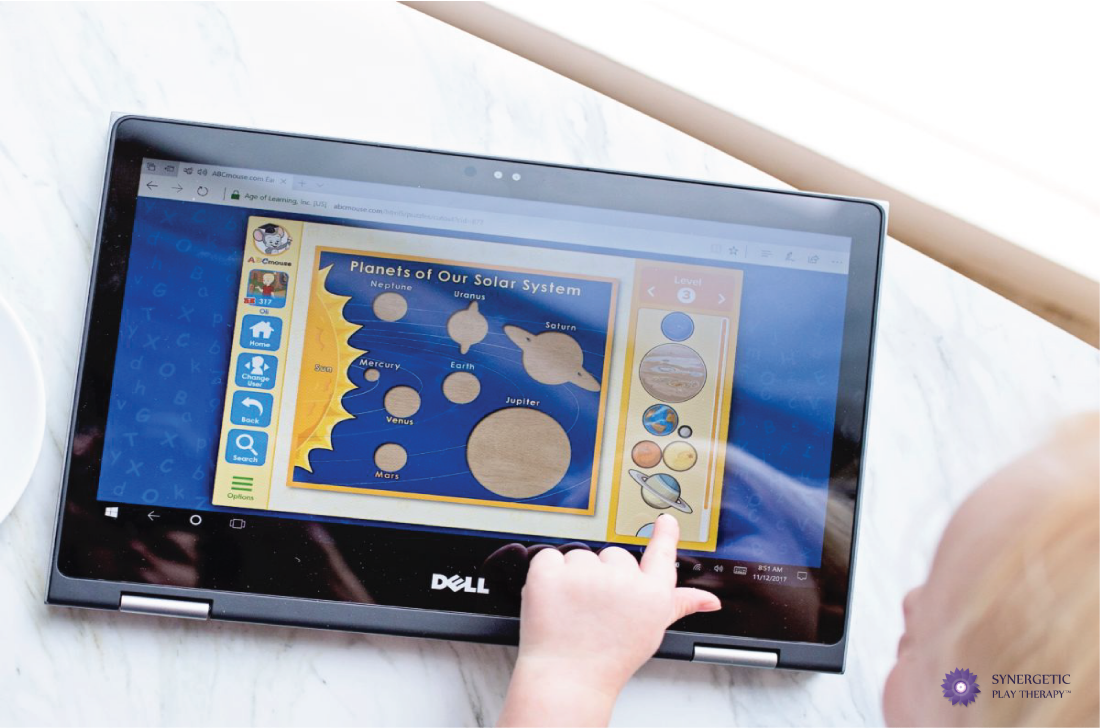By Lisa Dion, LPC, RPT-S
Some therapists hold to the rule that the playroom is an electronics-free zone. Others embrace technology, viewing it as another tool at their disposal. Where you stand on this issue is a personal choice, but technology certainly has its advantages, inside the playroom and everywhere else.
So, what are these? What makes a therapist warm to Mario or have a soft spot for a hard drive? They include the following:
Technology can be inviting: Many children are programmed for technology – parents often find themselves asking toddlers how to work electronics. Kids like the digital world – they identify with it and they find comfort in it. For the therapist, this may mean accommodations: allowing technology inside the playroom can make the experience less intimidating. This is especially important for any child who may be threatened by the play therapy process.
Technology broadens our practice: For therapists who stick to traditional play, there isn’t much room for the likes of tech. But, rather than Angry Birds making us angry, allowing ourselves to open our minds to other forms of play can do wonders for our practice. It can help us build a better repertoire with our child clients too.
Technology doesn’t mean zoning out: Kids can and do get lost in the screen, but that isn’t always the case. Sometimes, a child isn’t focused because they’re zoning out; instead, they’re focused because they’re engaged. Allowing technology in the playroom helps play therapists see what’s going on: is the child asking questions about what’s happening? Are they interested in the logistics? Are they curious about the programming or how things work? These are signs of stimulation rather than pacification.
Technology is just like any other toy: Technology gets a bad rap, with many of us questioning its necessity every time we hear the “T” word. But technology, ultimately, is like any other toy. It’s how it’s used that matters. How and why a child uses it, inside or outside of a therapy setting, can give us a lot of information regarding what is happening inside of them. They are showing us what they need and how they feel. Once we discover this, we can get to the heart of the healing process and figure out if there are alternative ways to meet the need and support their feelings instead of technology (if necessary). In order to do this, we must accept their use of technology, just as we accept other toys in the playroom.
Technology helps you run a smoother practice: The digital age isn’t all about entertainment or convenience; it’s certainly ushered in practicality too. Play therapists who bring tech into the playroom are also more likely to embrace it outside the playroom. This allows them to provide their clients and families with psycho-educational tools, assign digital “homework” or recommend helpful websites and apps, enhance communication, and improve access to resources.
Whether or not you allow technology inside your playroom is a decision only you can make but know that there is a bonus in the Gigabyte. How a child interacts with technology can speak volumes.
Interested in credits and courses delivered to your living room? Take a look at all our classes, available on our learning site.





